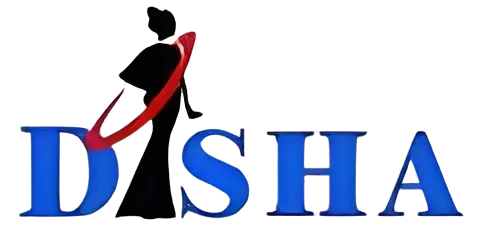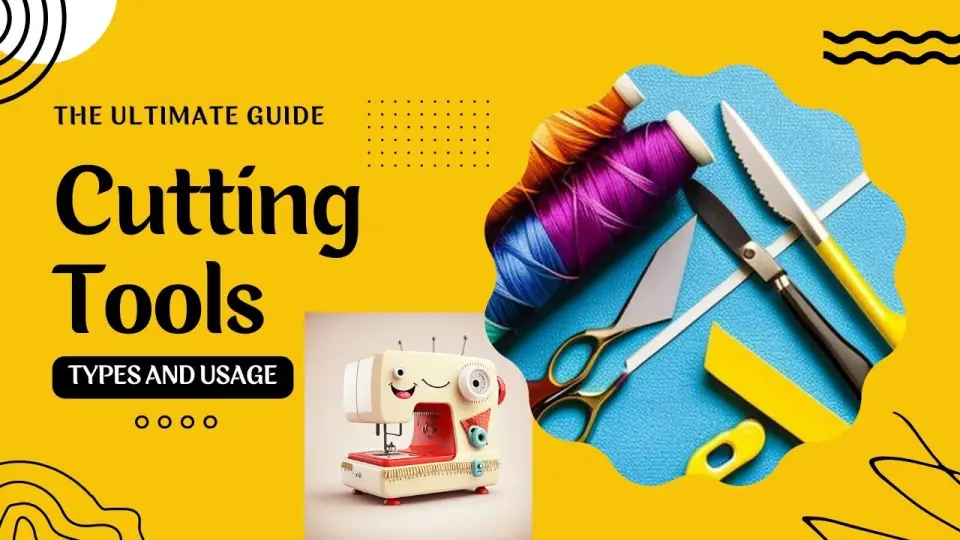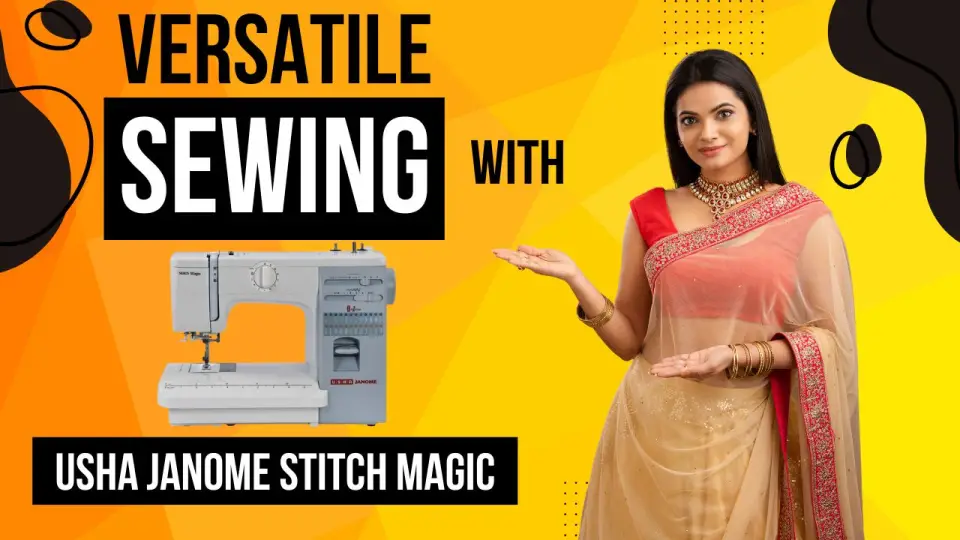The Ultimate Guide to Cutting Tools in Sewing: Types and Usage
Importance of cutting tools in sewing
From our childhood days we have never seen a tailor who does not have a scissor in his or her tool box. Cutting tools are a crucial aspect of sewing as they determine the accuracy of your cuts and ultimately the outcome of your project. From fabric shears to rotary cutters, seam rippers to thread snips, there is a cutting tool designed to suit every sewing task.
Table of Contents
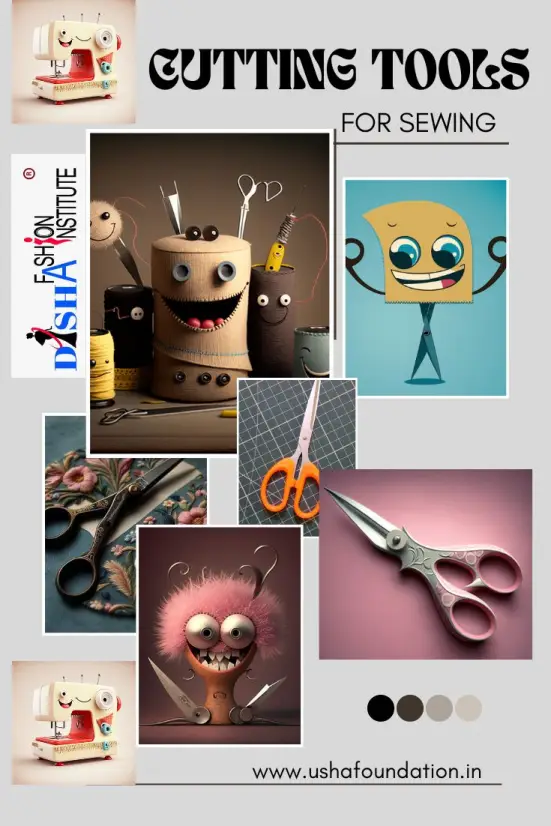
Overview of the different types of cutting tools available
There are different types of cutting tools available in the market. Different cutting tools have different purpose in every sewing project.
- Rotary Cutters
- Scissors
- Heavy-Duty Scissors
- Fabric Shears
- Dressmaking Shears
- Pinking Shears
- Embroidery Scissors
- Trimming Scissors
- Buttonhole Cutters
- Seam Ripper
- Thread Snips
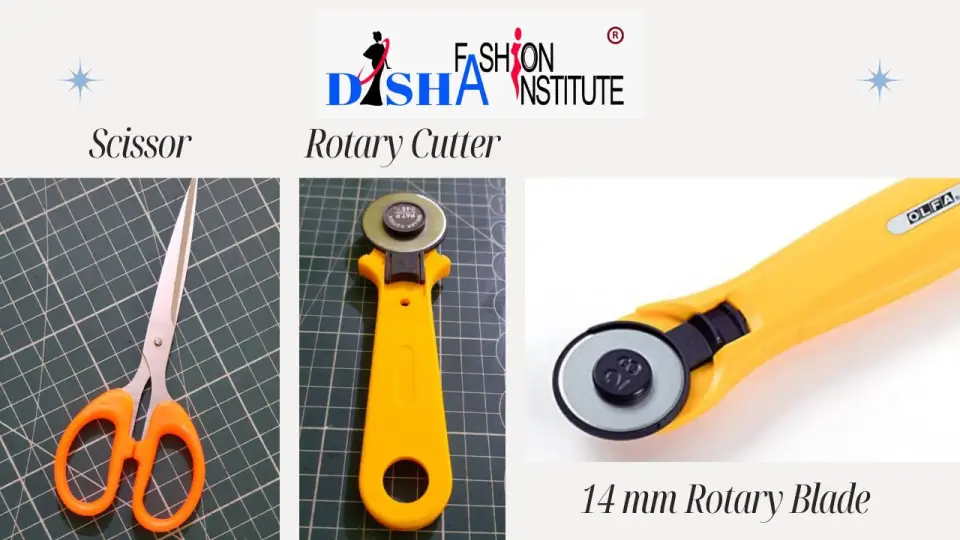
Rotary Cutters
For cutting cloth into straight strips, rotary cutters are a fantastic tool.
How to use Rotary Cutter
Choose the right rotary cutter for your needs– there are different sizes and types of rotary cutters available.
Get a self-healing cutting mat– this is important to protect your table and to keep your rotary cutter blade in good condition.
Line up your fabric– fold your fabric to create a straight edge and use a ruler to ensure your cuts are straight and accurate.
Expose the blade– press down on the button to expose the blade of the rotary cutter.
Start cutting– hold the rotary cutter in your right hand and use your left hand to guide the fabric using a ruler. Simply align the edge of the ruler with the cutting line of the fabric. Press down on the rotary cutter with enough pressure to cut through the fabric, but not so hard that you lose control.
Release the blade– after you’ve finished cutting, release the blade by pressing the button so that it is no longer exposed.
Store your rotary cutter and mat properly– store your rotary cutter with the blade covered and store your cutting mat flat to prevent warping or damage.
Remember, the blades of rotary cutters are extremely sharp, so always be careful when using one.
14 Millimeter Rotary Blade
A tiny 14mm rotary blade is an excellent alternative. Due to its excellent manoeuvrability, this tool is perfect for cutting complex patterns and forms. It contains a protective cover as well as a multipurpose tool that may be used as a Hera marker or point turner at the end.
Tips for using rotary cutters safely
Choose the Right Blade:Select a blade that is appropriate for the type of fabric you are cutting. Dull blades are more dangerous than sharp ones.
Keep Blade Covered:Always keep the blade covered when not in use to prevent accidental cuts.
Use a Cutting Mat:A cutting mat provides a stable surface for cutting and protects your table or countertop from damage.
Cut Away from Body:When cutting, hold the rotary cutter away from your body to avoid injury.
Maintain Proper Grip:Keep a firm grip on the rotary cutter to prevent slipping and ensure stability.
Keep Hands Away from Blade:Keep your hands clear of the blade at all times.
Use a Ruler or Template:Use a ruler or template to guide your cuts for accuracy and to prevent hand fatigue.
Store Safely:Store your rotary cutter in a safe place, out of reach of children and pets, to prevent accidental cuts.
Dispose of Blades Properly:Replace dull blades promptly and dispose of them properly to avoid injury.
Take Breaks:Avoid overusing your rotary cutter by taking regular breaks to prevent hand fatigue and to maintain proper cutting technique.
Scissors
Scissors are a classic tool for cutting fabric and are a staple in any sewer’s toolkit. Regular scissors are great for general fabric cutting, but duck-billed scissors are the perfect tool for cutting around appliques. These scissors allow you to cut up close to the applique without damaging the threads.
Heavy-Duty Scissors
When working with heavy-duty materials like cork, burlap, or fancy fabrics, you’ll need a pair of heavy-duty scissors. These scissors can cut through even the thickest materials with ease, making them ideal for quilting and other heavy-duty sewing projects.
Fabric Shears
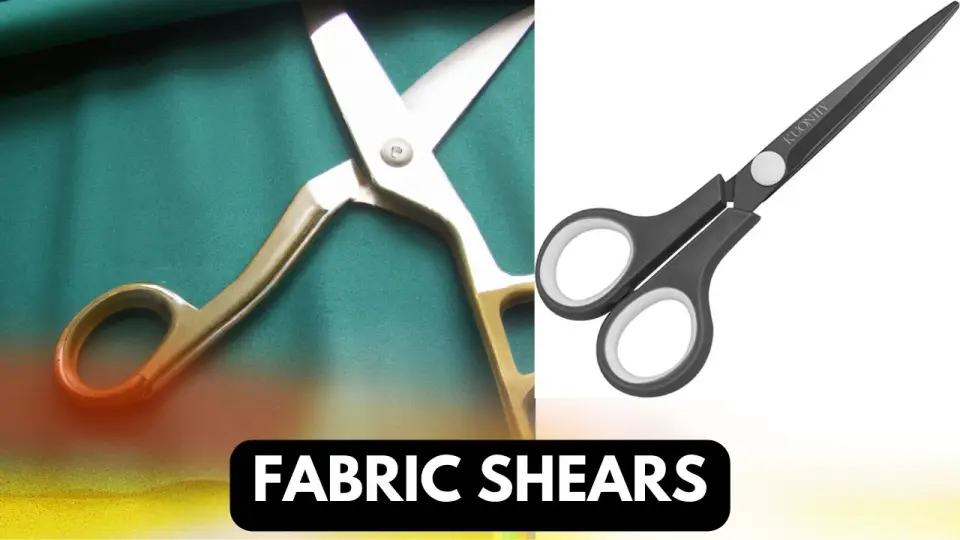
Cutting cloth, leather, and other textiles is done with the use of a sort of scissors called fabric shears. They frequently weigh more and are bigger than normal scissors, and their longer blades make it simple to cut through several layers of fabric simultaneously. The sharp, straight edge of fabric shears is intended to provide precise cutting and the ability to follow straight lines. They are often fashioned of sturdy, high-quality materials like stainless steel, which helps guarantee that they keep their edge over time. Tailors, seamstresses, and anybody else working with fabrics or making clothes need fabric shears as a basic tool. They are also frequently utilised in many other fields where precision cloth cutting is necessary, such as upholstery and interior design.
Dressmaking Shears
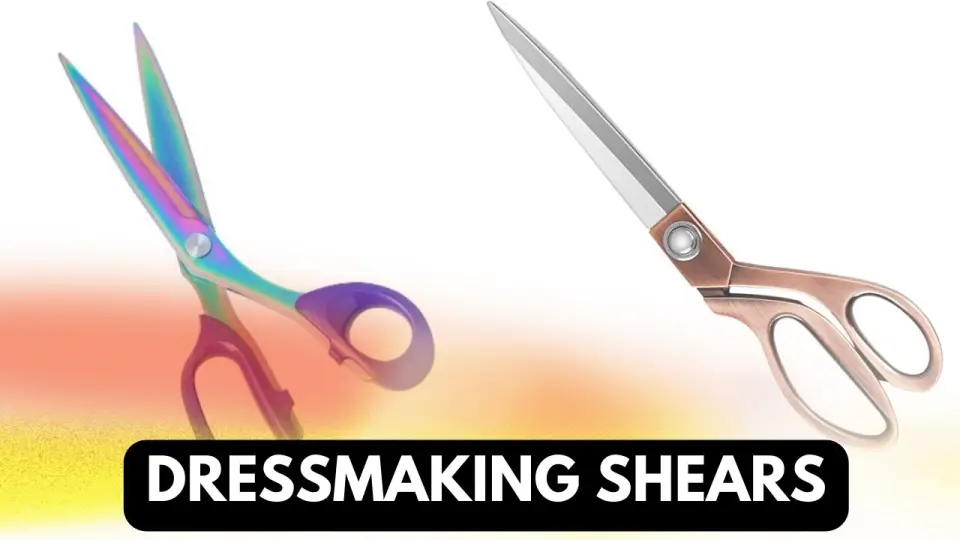
Dressmaking shears are similar to fabric shears. Both types of scissors are used for cutting fabric. But there are some key differences between the two.
Dressmaking shears are specifically designed for cutting clothing fabrics and are typically longer, with a longer blade and larger handles to accommodate a comfortable grip for extended use. They are also typically more finely honed, which allows for smoother, more accurate cutting of fabrics.
Fabric shears, on the other hand, are generally more versatile and can be used to cut a variety of fabrics, including those for home decor and crafting. They may have a shorter blade length and smaller handles, which makes them easier to maneuver and control.
The main visible difference you will find between the fabric shear and the dress-making shear is the shape of the handles and the blades. The two handles of the dress-making shears are not the same size, and the blades are longer. The handles on fabric shears are all the same size.
Ultimately, the choice between dressmaking shears and fabric shears comes down to personal preference and the specific needs of the user. Both types of shears are essential tools for any sewing or dressmaking project, as they allow for accurate and precise cutting of fabrics.
Pinking Shears
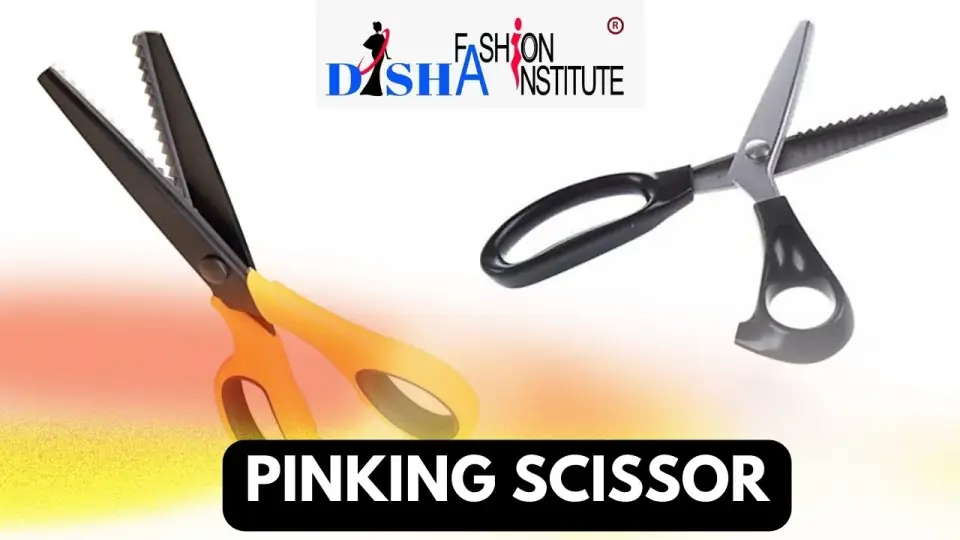
When you cut fabric using pinking shears, the edge develops a zigzag pattern. Sometimes you need to use this instrument to create this particular shape to stop fabric from fraying and unravelling. Blades on pinking shears are serrated and razor sharp. It sliced through the material to produce a precise, sharp edge. They are typically constructed from premium materials, such as stainless steel, which helps to ensure that they keep their edge over time. In addition to trimming cloth for a finished edge and cutting fabric for sewing projects, pinking shears are a multipurpose instrument that may be used for a variety of tasks.
A pinking shear is a type of scissor with a saw-toothed blade used for cutting fabric in a zigzag pattern to prevent fraying.
Embroidery Scissors
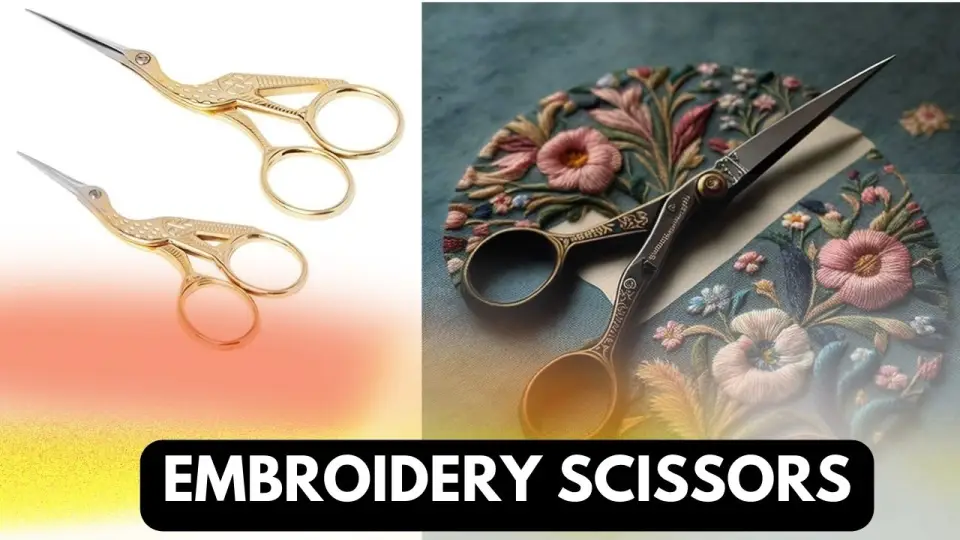
In needlework and embroidery projects, specialised scissors called embroidery scissors are used to cut threads and textiles.
Embroidery scissors have pointed, sharp blades that enable precision cutting.
They frequently have easy-grip handles, which are crucial for prolonged use in complex jobs. Because they are made to prevent tearing the fabric and threads, embroidery scissors are a necessary piece of equipment for anyone who embroiders. They can be used to cut cloth, shape embellishments, and snip threads. A quality pair of embroidery scissors can endure for many years with proper care and upkeep, making them a wise purchase for any embroidery aficionado.
Trimming Scissors
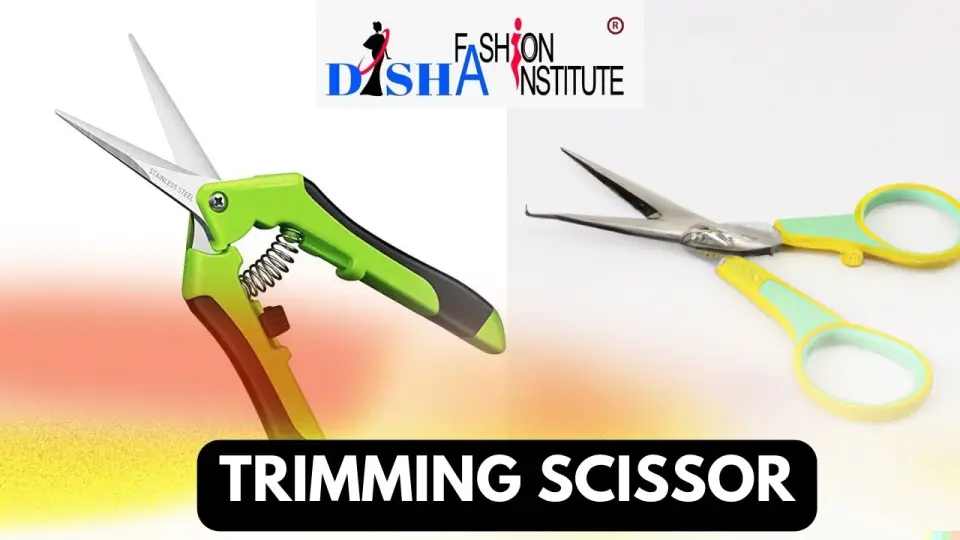
Trimming shears are another name for trimming scissors. To cut tiny details and trim threads, this kind of scissors are used in sewing and other textile arts. They have narrower blades than dressmaking or fabric shears, allowing for more precise cutting. Cutting small pieces of cloth, trimming seams, and snipping threads are all popular uses for trimming scissors. They are a useful tool for tailors, seamstresses, and anyone else who appreciates sewing and textile arts because of their small size and exact blades. They are helpful for various little jobs like clipping buttons and trimming loose threads.
How to Maintain and Sharpen Your Scissors for Optimal Performance
Scissors are a vital tool in many households and workplaces, and keeping them sharp and well-maintained is essential for optimal performance. In this article, we will provide you with tips and techniques for maintaining and sharpening your scissors to extend their lifespan and improve their cutting ability.
Maintenance Tips
Cleaning
Regular cleaning of your scissors is important to remove any dirt, debris, or corrosion that may affect their performance. Use a soft cloth to wipe down the blades and handle after each use, and store your scissors in a clean, dry place.
Lubrication
Lubrication can help reduce friction and prevent wear and tear on the blades and pivot points of your scissors. Use a high-quality lubricant, such as silicone spray or a light oil, to keep the blades and pivot points well-lubricated.
Tightening Screws
Screws can become loose over time, affecting the alignment and performance of your scissors. Regularly check the screws and tighten them as necessary to maintain proper alignment.
Sharpening Tips
Use a Sharpening Stone
A sharpening stone is a tool that can be used to sharpen and realign the blades of your scissors. Hold the sharpening stone in one hand and the scissors in the other, and use a back and forth motion to sharpen the blades.
Use a Honing Steel
A honing steel is a tool that can be used to realign and maintain the sharpness of your scissors. Hold the honing steel in one hand and the scissors in the other, and use a back and forth motion to align the blades.
Professional Sharpening Services
If your scissors are severely dull or damaged, it may be best to have them sharpened by a professional. Professional sharpening services can provide a more accurate and thorough sharpening, and can also repair any damage to the blades.
Buttonhole Cutter
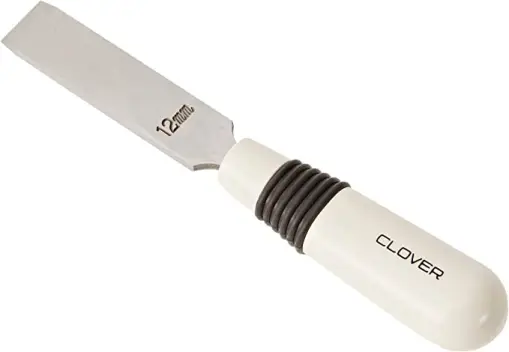
In order to open buttonholes in fabric, one uses buttonhole cutters. They come in various sizes and colours and feature a sturdy hardwood handle with a steel blade at the end. To produce a precise cut, tap the cutter’s tip against the fabric with a little hammer. A few light taps will cut the fibres if the blade is aligned with the buttonhole’s stitching’s end.
Seam Ripper
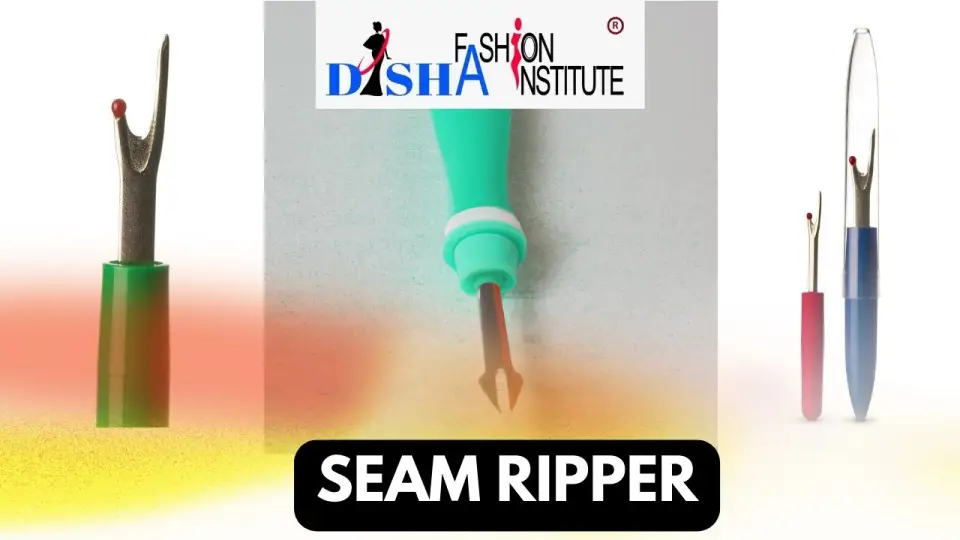
A seam ripper is a sewing tool used for removing stitches.
A seam ripper can be used by holding it sideways and carefully sliding it below each stitch to cut through the fabric with itsJ-shaped razor edge.Since they are the most difficult to remove, begin by taking out the stitches at the ends where you backstitched. To avoid tearing the cloth, work gently, removing a few stitches at a time, and only cutting one in every four or five stitches. Once you’ve backstitched all the way to the end, take your time and slice each stitch one at a time.
Thread Snips
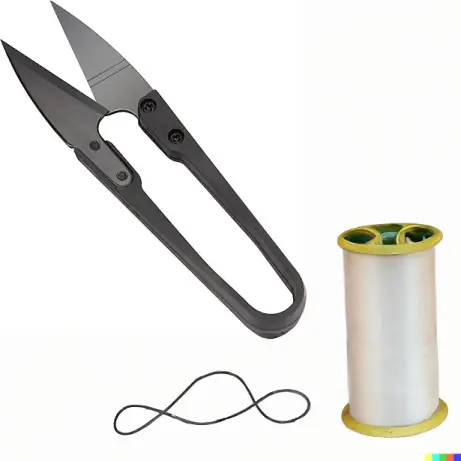
A thread snip is a kind of tiny cutting tool that is useful for any sewing project. They are also referred to as thread cutters, thread clippers, or sewing scissors.
Thread snips are built specifically for cutting thread. Thread snips have sharp, pointed blades that make it easier to clip threads close to the fabric.
Use thread snips to cut the thread as closely as you can to the fabric while holding the fabric tightly in one hand. The cloth must be handled with a smooth, steady motion in order to protect it. When not in use, thread snips should be kept safely in storage to avoid accidental harm. Thread snips are useful for any sewer since they offer precise and clean cuts when working on a project.
How to Choose the Right Cutting Tool for Your Project
When choosing a cutting tool, consider the type of fabric you are working with and the type of cuts you will be making. For example, rotary cutters are excellent for straight cuts on multiple layers of fabric, while pinking shears are ideal for preventing fraying.
Maintenance of Cutting Tools
Proper maintenance of your cutting tools is essential for their longevity and optimal performance. Clean and oil your scissors regularly, store them in a safe place, and avoid using them for anything other than cutting fabric.
Conclusion
In conclusion, using the right cutting tools can make a significant difference in the outcome of your sewing projects. By having a clear understanding of the various types of cutting tools and their uses, you can choose the best tools for your specific needs and achieve professional results. Whether you are an experienced seamstress or just starting out, it is important to experiment with different tools to find the ones that work best for you. With the knowledge gained from this ultimate guide, you can confidently tackle any sewing project with ease. Happy sewing!
